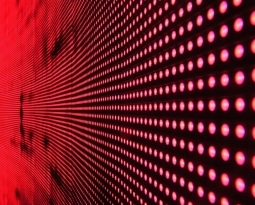Idaho Patent of the Month – December 2021
Deep fakes are a rising concern in our increasingly online world. Where we used to use video content as evidence and trustworthy sources of the truth, we can no longer inherently believe what we see. Videos, images, and sounds can be edited in ways which can not be detected by the human viewer. If we can’t tell the difference between an altered and an unaltered image, video, or sound bit, it becomes increasingly difficult to believe what we watch.
While some may use these technologies for silly and harmless purposes – like altering their favorite celebrity to say something funny – there are potentially truly harmful applications – from modifying what we see on the news to providing false evidence.
DeepTruth, LLC has developed a system to authenticate different forms of media data. Their system utilizes steganographic and blockchain techniques to be as accurate as possible.
Steganography is an ancient practice of concealing messages within another message or object. In terms of cybersecurity, steganography refers more specifically to hiding files, messages, images, or videos within another file, message, image, or video.
Blockchain is a data recording/storing system that uses data blocks to make the stored data immutable. This makes it more difficult to change, hack, or cheat the system.
In DeepTruth’s authentication system, captured media data is first broken into segments and cryptographic representations – made of hashes. These are written to an immutable ledger (blockchain) along with any available metadata. This immutable storage is then validated within the system. The media data is broken into subsets by a separate server and compared to the blockchain ledger, looking for any discrepancies in cryptographic representations between the two. At this point, a steganographic detection program detects and tests potential steganographic algorithms, looking for potential embedded files. Based on these comparisons, the system determines a trust score. This also takes the metadata into account, looking at discrepancies like differences between GPS metadata. Based on this trust score, DeepTruth can reliably authenticate – or authenticate – a video, image, or audio.
Are you developing new technology for an existing application? Did you know your development work could be eligible for the R&D Tax Credit and you can receive up to 14% back on your expenses? Even if your development isn’t successful your work may still qualify for R&D credits (i.e. you don’t need to have a patent to qualify). To find out more, please contact a Swanson Reed R&D Specialist today or check out our free online eligibility test.
Who We Are:
Swanson Reed is one of the U.S.’ largest Specialist R&D tax advisory firms. We manage all facets of the R&D tax credit program, from claim preparation and audit compliance to claim disputes.
Swanson Reed regularly hosts free webinars and provides free IRS CE and CPE credits for CPAs. For more information please visit us at www.swansonreed.com/webinars or contact your usual Swanson Reed representative.

















